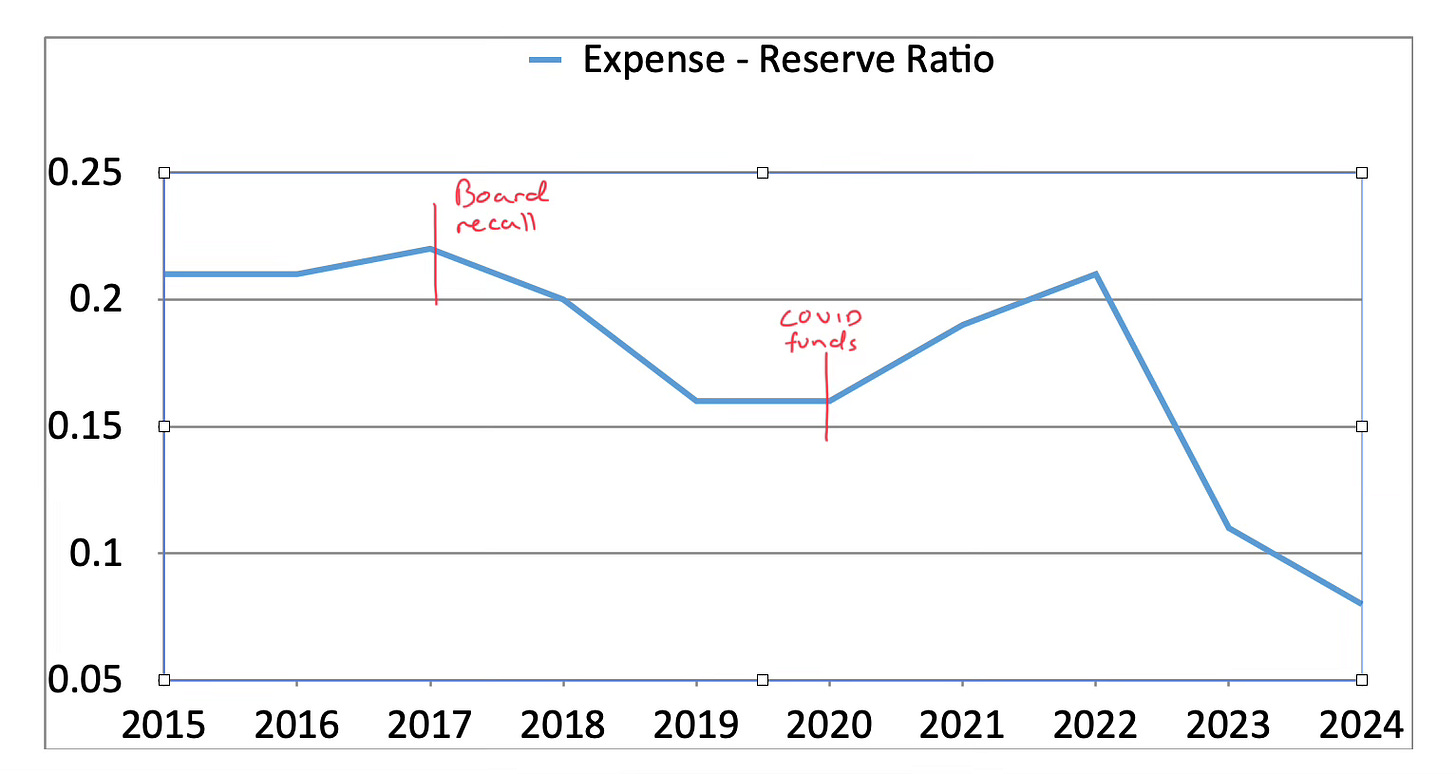Opinion: TPS Fund Equity Levels
A look at how our financial security is measured
If you’ve attended a school board meeting or read an article about how our district manages funds, you’ve likely heard the term “fund equity”. According to the Government Finance Officers Association (GFOA), it's recommended that governments establish a formal policy on maintaining an unrestricted fund balance in the general fund. While there isn't a one-size-fits-all number, GFOA suggests that a prudent level of financial resources should be maintained to protect against reducing service levels due to temporary revenue shortfalls or unexpected expenditures.
This number is referred to as fund equity, represented as a percentage. Simply put, it is used to determine the financial strength of the district by calculating our ability to brace against unexpected outcomes. The formula is simple: (total fund balance / total expenditures) * 100. States like California consider it prudent to maintain fund equity at around 3%, while states like North Carolina consider 8% to be safe. Michigan likes the number at 15%. (https://www.lenconnect.com/story/news/education/2021/12/18/tps-approves-mid-year-budget-revisions-sees-increase-fund-equity/8925401002/).
The chart above shows the TPS equity fund for the last decade. The line shows a similar pattern to what I reported previously for other metrics (https://open.substack.com/pub/educatetecumseh/p/tps-finances-trends-over-a-decade?r=c5fgx&utm_medium=ios), but there may be hope for the decline as funding for building renovations could cushion our reserves. This ratio represents all expenditures, from teacher salary to roof repair. Ceteris peribus, a surprise HVAC repair, for instance, would cause a sudden dip.
So why is the bar for fund equity so high in Michigan? The state funding model will dictate specifics of how state funding is calculated, including recapture policies, and can influence what's considered a responsible balance. If enrollment is declining, a higher reserve might be necessary to buffer against revenue decreases. In districts where staff costs dominate expenditures, ensuring enough reserve to cover payroll during uneven revenue periods is crucial.
While our fund equity is the lowest it’s been in a decade, this may not be cause for concern… yet. Our school board has attempted to stick closely to the 15% number, which could be described as a cautious, especially given declining enrollment (and declining population). Although the recent sinking fund can only be spent on facilities, this can free up money from the reserve fund that would otherwise be allocated to pay for repairs.
In conclusion, for a school district with an enrollment of about 2,500 students, a responsible fund balance might range from 3% to 8% of annual expenditures, with the exact figure depending on local policy, state guidelines, and the district's financial stability and future projections. If you plan to attend future TPS school board meetings (and I hope you do!), look for the fund equity number as a metric of our financial strength.


